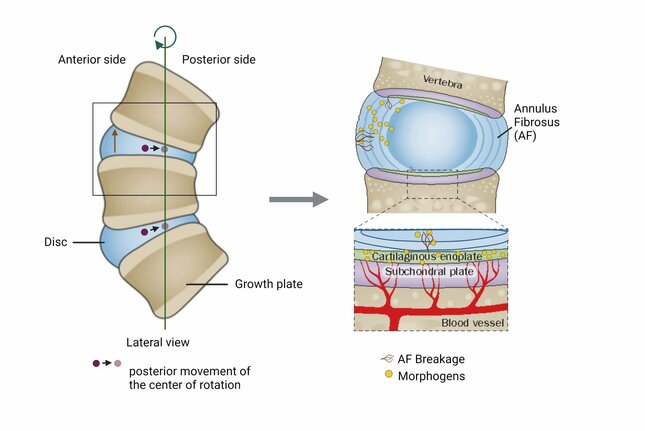
Adolescent idiopathic scoliosis (AIS) is a spine deformity that emerges during a child's growth spurt, affecting millions worldwide and causing physical and psychological distress. Despite extensive research, the cause of AIS remains unclear, impeding effective prevention, treatment, and cure. Recent studies have shifted focus to the intervertebral discs (IVDs) as the starting point rather than the vertebrae previously assumed. During the growth spurt, powerful signaling molecules called morphogens are released in the surrounding area, potentially infiltrating the outer layer of the IVDs, specifically the Annulus Fibrosus. Simultaneously, scoliotic patients experience overstressing of IVDs due to reduced axial twisting restriction and spinal instability, leading to microdamage and increased morphogen influx. Both morphogens and overstraining contribute to excessive tissue formation and impaired repair capacity, resulting in misshaped IVDs and the observed spinal curvature in scoliosis. Our research aims to identify morphogens that influence IVD tissue formation, remodeling, and repair and study their combined effect with applied strain using in vitro and ex vivo models to better understand scoliosis development.